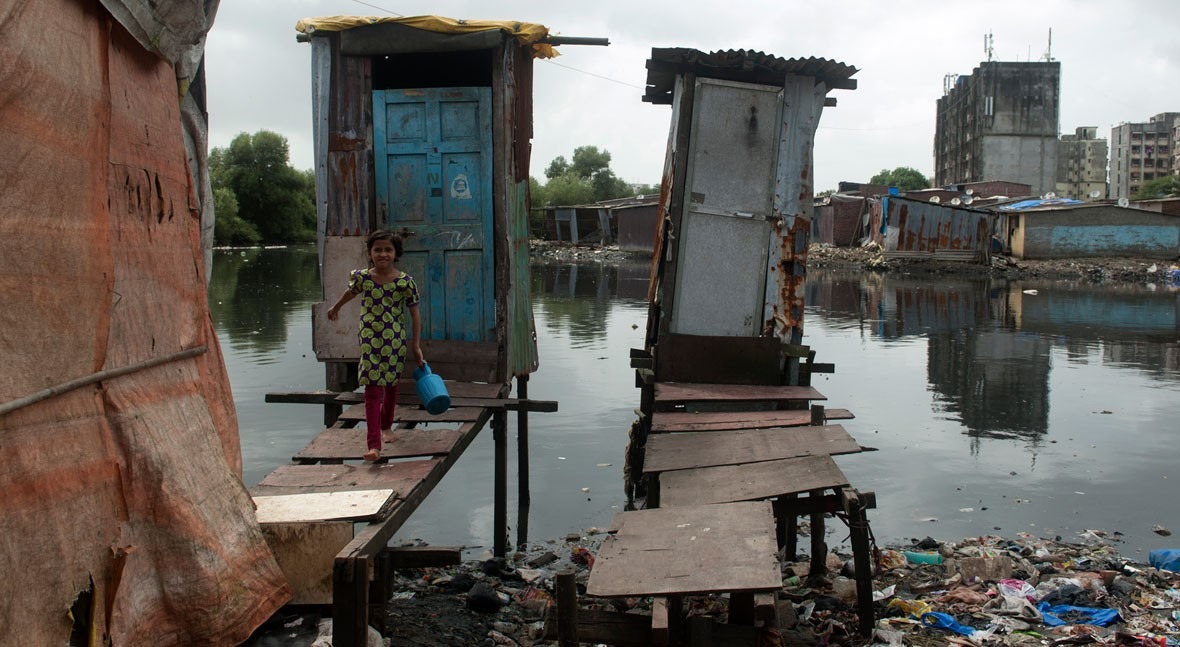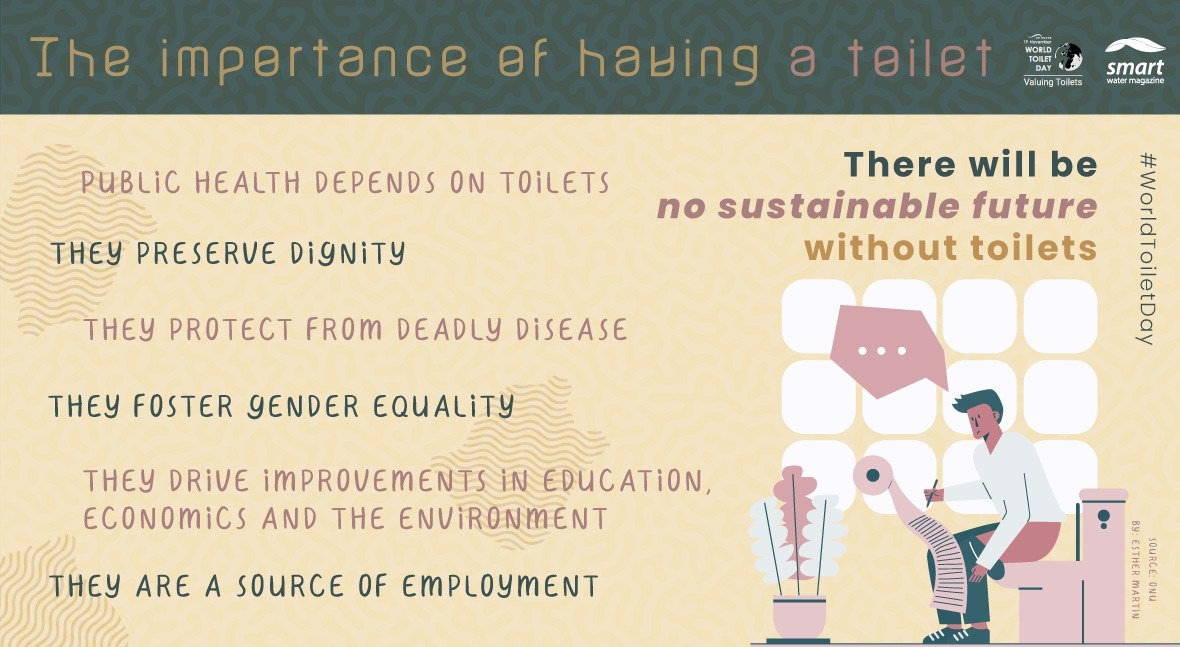World Toilet Day 2021: valuing toilets

One of the things we humans do as soon as we get up from bed is going to the toilet to urinate or defecate; a need we experience several times each day and we meet going to the toilet as part of our daily routine. However, few are concerned about where our faeces go and let alone are aware of sanitation services which are, without a doubt, one of the major advances in public health in recent times.
With nearly 2.3 billion people (1 in 3 of the global population) lacking basic handwashing facilities at home, the pandemic caused by SARS-CoV-2 has reinforced the importance of having basic sanitation facilities to fight the spread of the virus, diseases, and ultimately, prevent deaths. To the above number, we can add that there are still 494 million people practising open defecation globally. It might not seem a large number if we consider that the world's population is 7.7 billion. But that 6.4% of the global population has the same rights as the rest, including the human right to water and sanitation, which states the need to provide a clean supply of drinking water and sanitation that is healthy, clean, accessible and affordable to all.
Every November 19 we celebrate World Toilet Day. Follow this day's actions on Twitter with the hashtag #WorldToiletDay
Going back to the world's population, 3.6 billion people live without access to safely managed sanitation, that is, 46.7% of the population. Almost half the people on the planet are at risk of becoming ill or dying because they lack safe sanitation systems, and that is why World Toilet Day is observed every year on November 19.
The human right to water and sanitation states the need to provide a clean supply of drinking water and sanitation that is healthy, clean, accessible and affordable to all.
One day every year to raise awareness of the nearly half of the global population living without access to safely managed sanitation. But it is not just that: when some people in a community do not have toilets, everyone is at risk, because poor hygiene can contaminate drinking-water sources, rivers, fields and beaches, spreading serious diseases. In fact, the UN warns that at least 2 billion people use a drinking water source contaminated with faeces, and every day over 700 children under five years old die from diarrhoea linked to unsafe water, sanitation and poor hygiene.
Who cares about toilets?
With this question, UN Water — the United Nations mechanism in charge of coordinating issues related to water and sanitation — seeks to address the sanitation world crisis and achieve Sustainable Development Goal 6: water and sanitation for all by 2030.
With the theme "Valuing toilets", this year's campaign draws attention to the fact that toilets – and the sanitation systems that support them – are underfunded, poorly managed or neglected in many parts of the world. This has all sorts of devastating consequences for health, economics and the environment, particularly in the poorest communities.

The developed world sees these as very distant problems, so let us take a closer look. Please raise your hand if you have never come upon a smelly, clogged up toilet, with tadpoles swimming lengths in the flooded floor, at some club, joint or bar. It's inevitable to be disgusted and gag even just recalling the situation, so let us continue using our imagination to lay on the table the crude problems of the world sanitation crisis.
What would you do if your kid or your nephew had to relieve himself or herself out in the open or in a makeshift bucket or latrine because there were no sanitation facilities at their school? ¿Or if your teenage daughter or niece had to stay home when she has her period because her school lacks proper facilities to ensure basic hygiene? And what if you could not guarantee that the water your family uses to drink, cook or wash has not been in contact with human or animal faeces?
The lack of safe basic sanitation facilities is one of the hurdles to address within the global water crisis humankind faces.
Raising awareness of the problems that World Water Day emphasizes every year is a task for everyone, but it also falls upon those ultimately responsible for water and sanitation management. The United Nations claims we urgently need massive investments and innovation to increase fourfold our progress along the "sanitation chain", that is, from toilets to transport, collection and treatment of human waste. That journey of faeces is extremely important; it is invisible for those who have a good connection to the sanitation network, but demand it works properly as a public service, and yet for others it is non-existent.
Investments and innovation are urgently needed to increase fourfold our progress along the "sanitation chain"
The public and private sectors have to work jointly to create sustainable sanitation systems that work not just in developed countries, but also in underserved communities that concentrate in countries with fewer resources. Governments must, says the UN, listen to the people left behind who have no access to toilets, allocating specific funds to take them into account in planning and decision-making processes. Because we all want to have a clean and safe toilet when we get up every morning or when we go somewhere. Don't we?
What is a sustainable sanitation system?

Sustainable sanitation begins with a toilet — in a safe, accessible and dignified setting — that effectively captures human waste. The waste can then be transported through sewers or be stored in a tank whose content can be treated on site or emptied later by a collection service. The next stage is treatment and use or disposal without risks.
Safe reuse of treated human waste allows the capture of greenhouse gas emissions for energy production purposes, and provides agriculture with a reliable source of water and nutrients.
In addition, sustainable sanitation systems must be able to withstand the effects of climate change, such as more frequent floods and droughts, changes in water availability, and sea level rise.
Source: UN.








